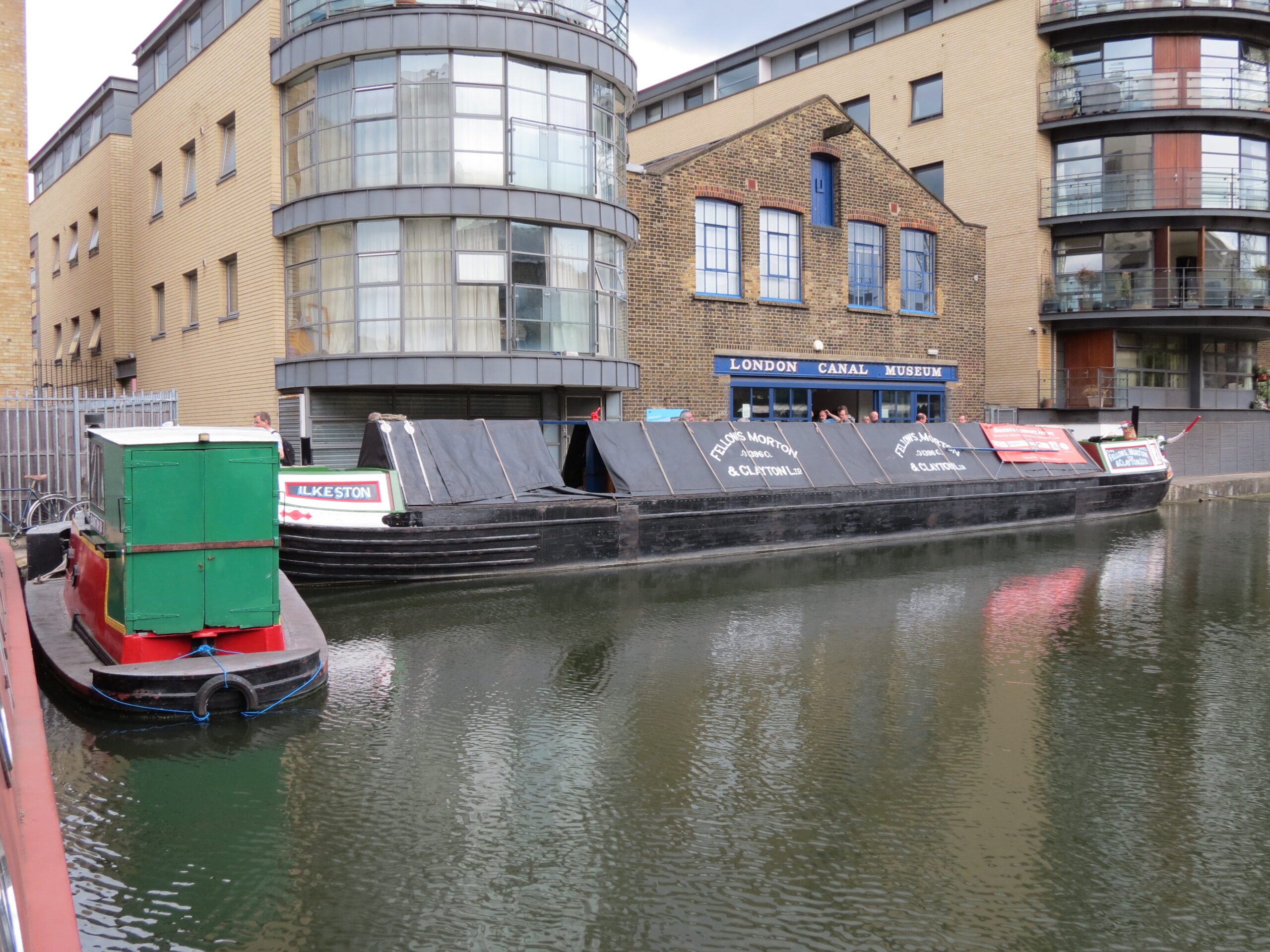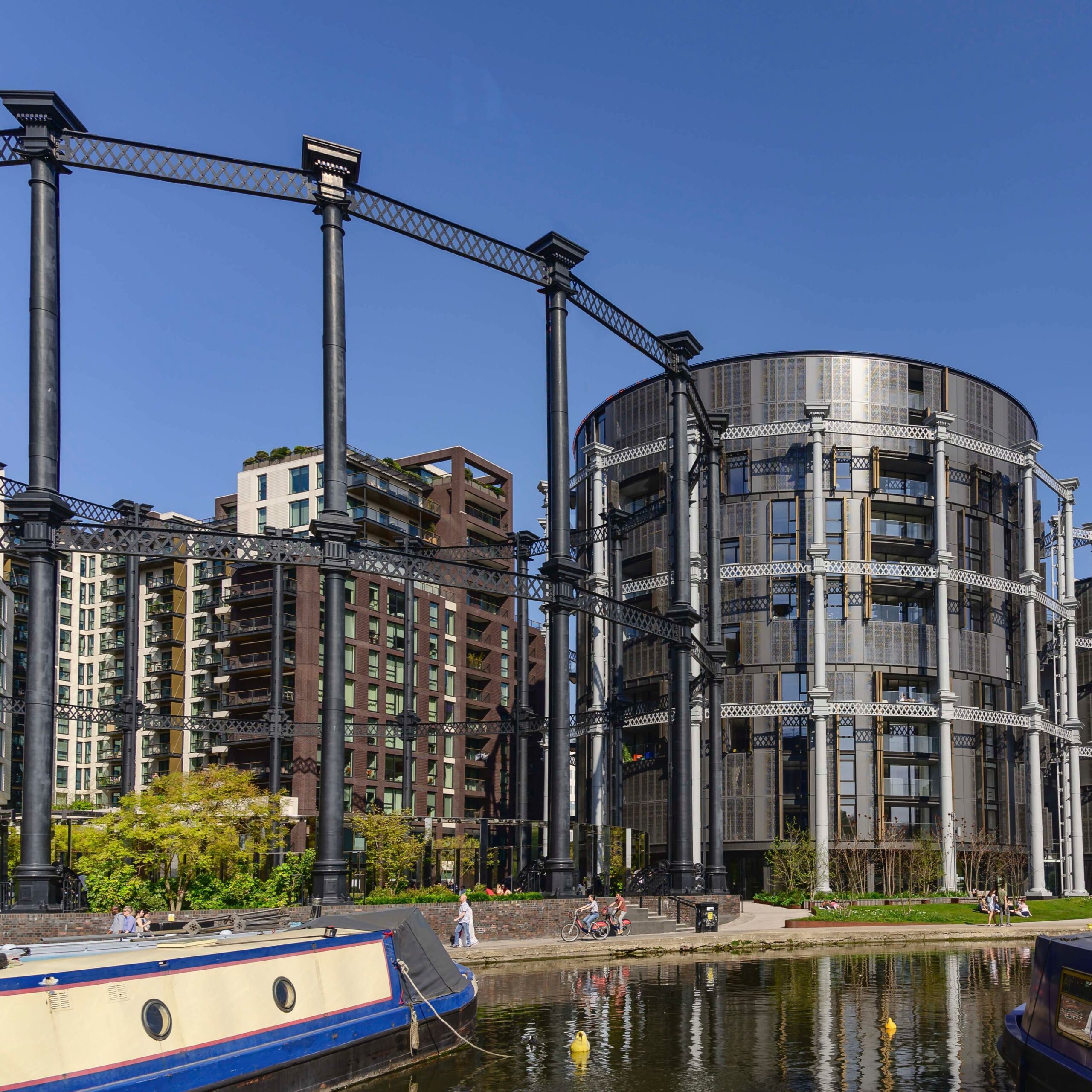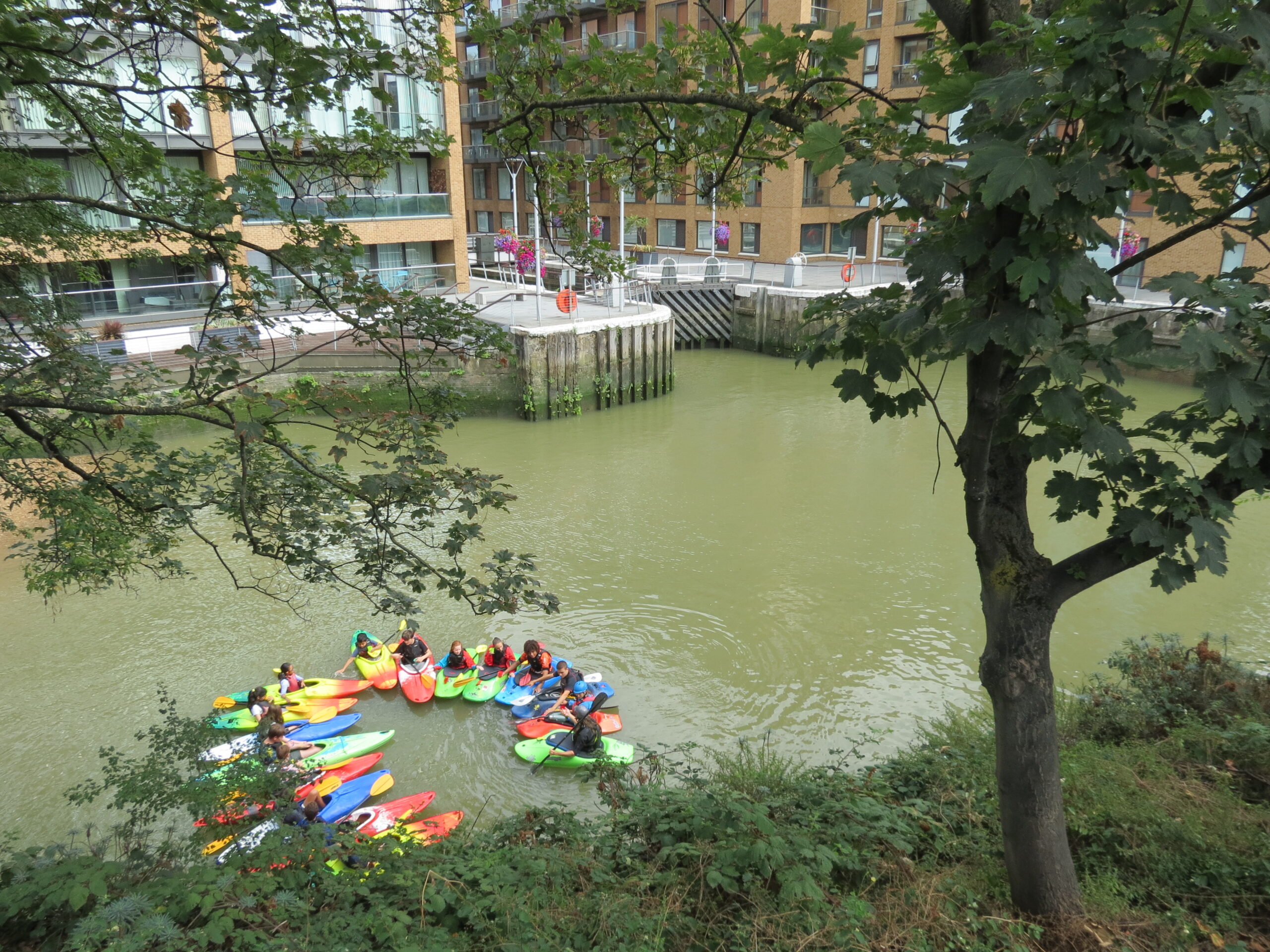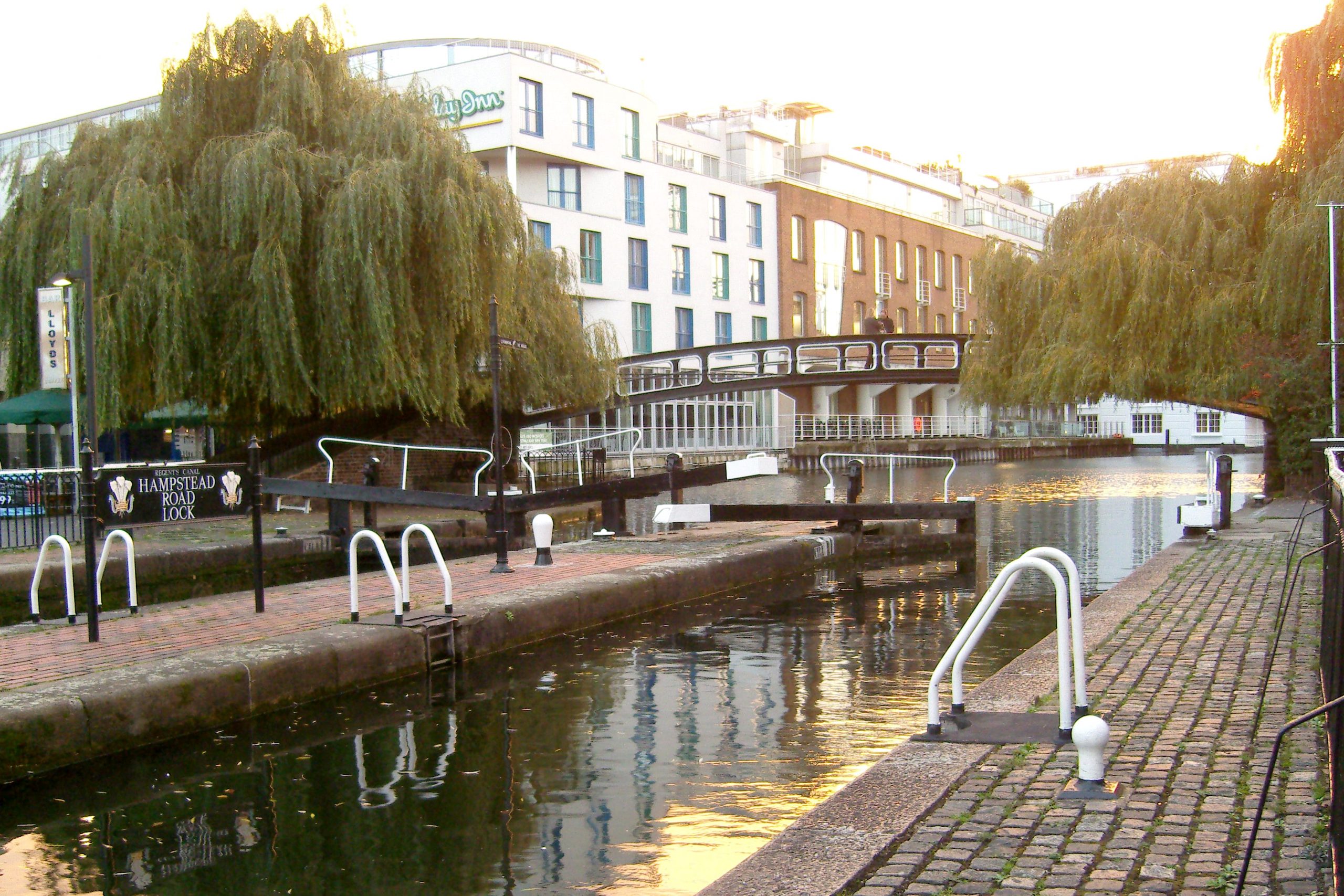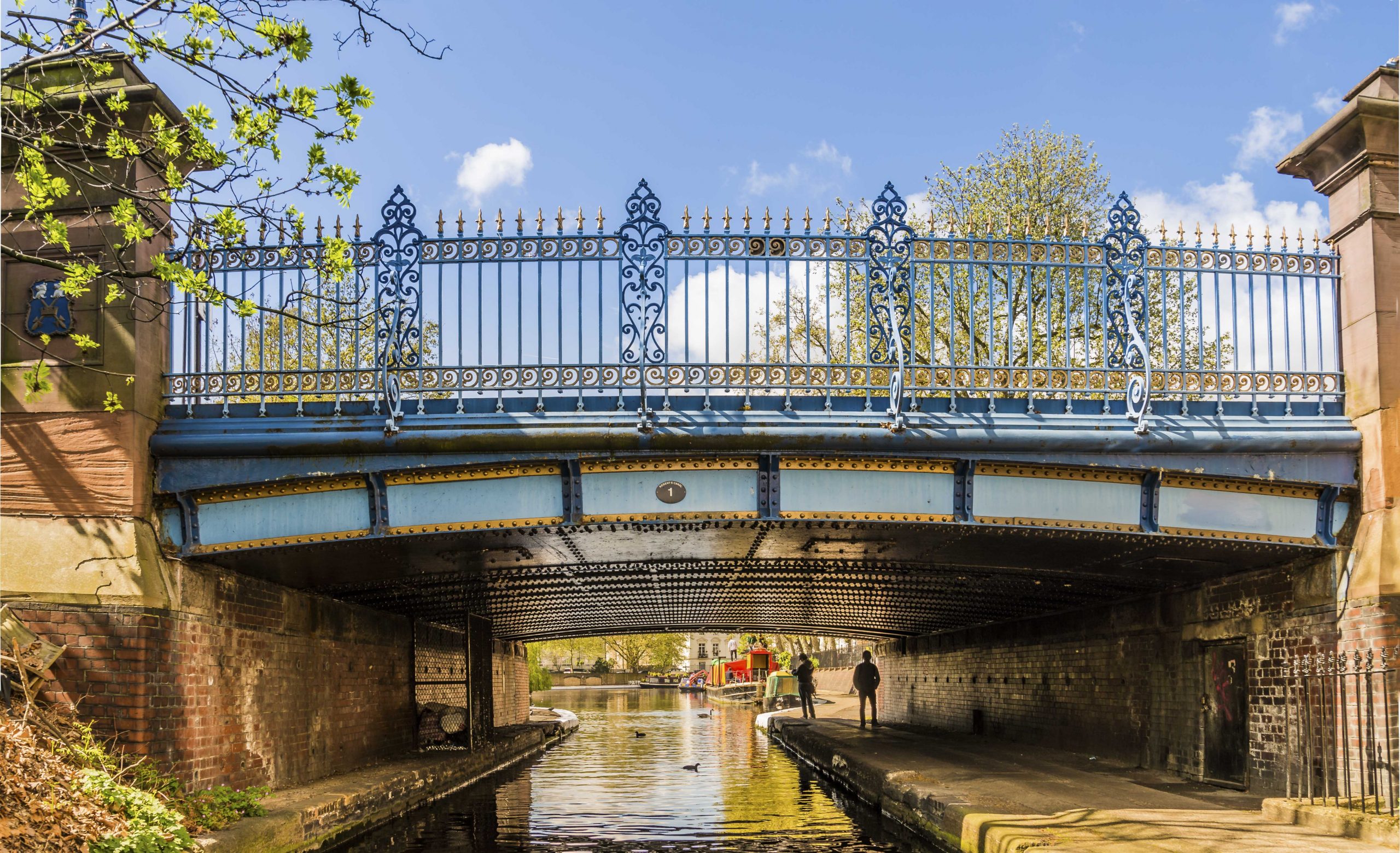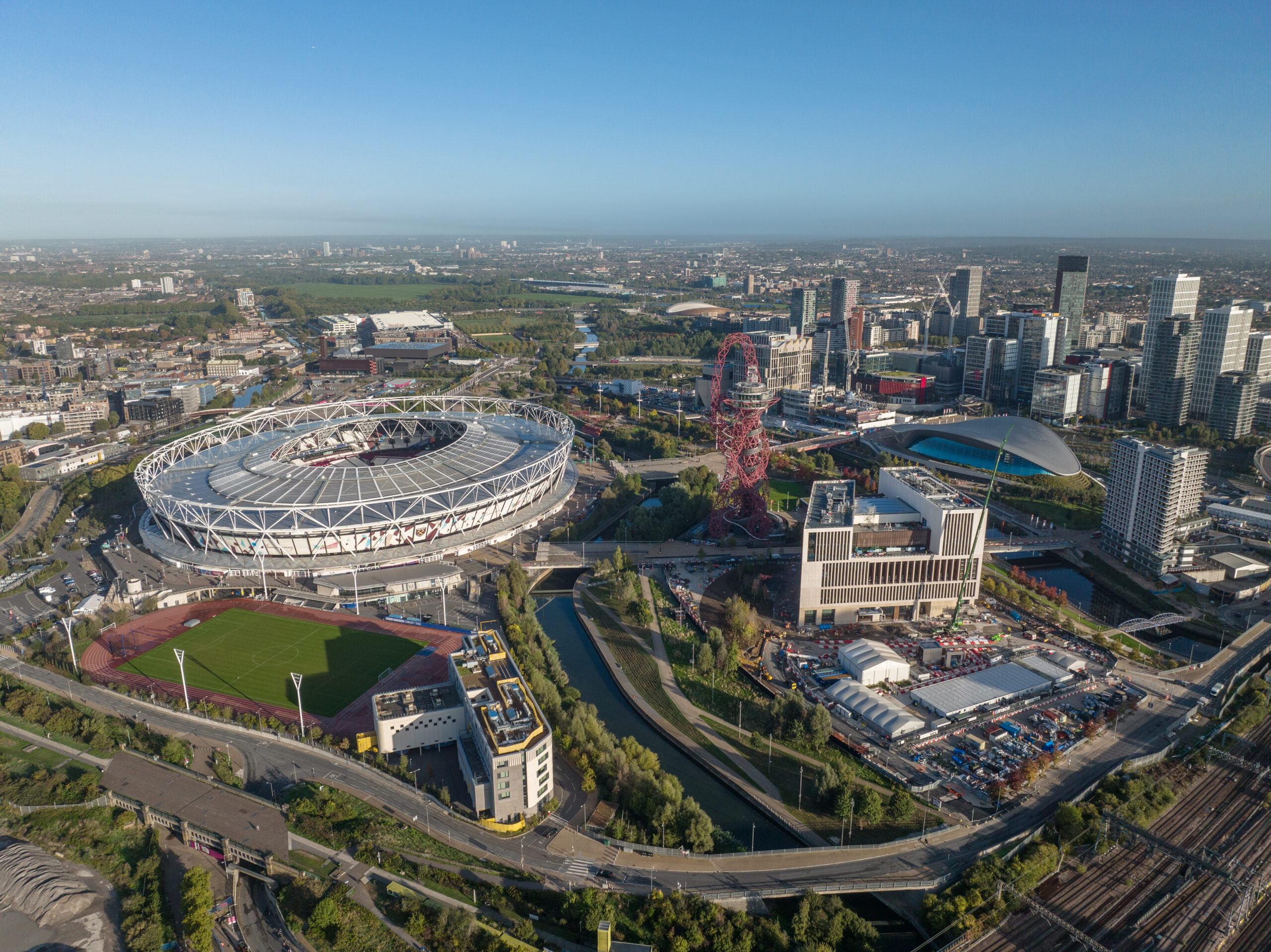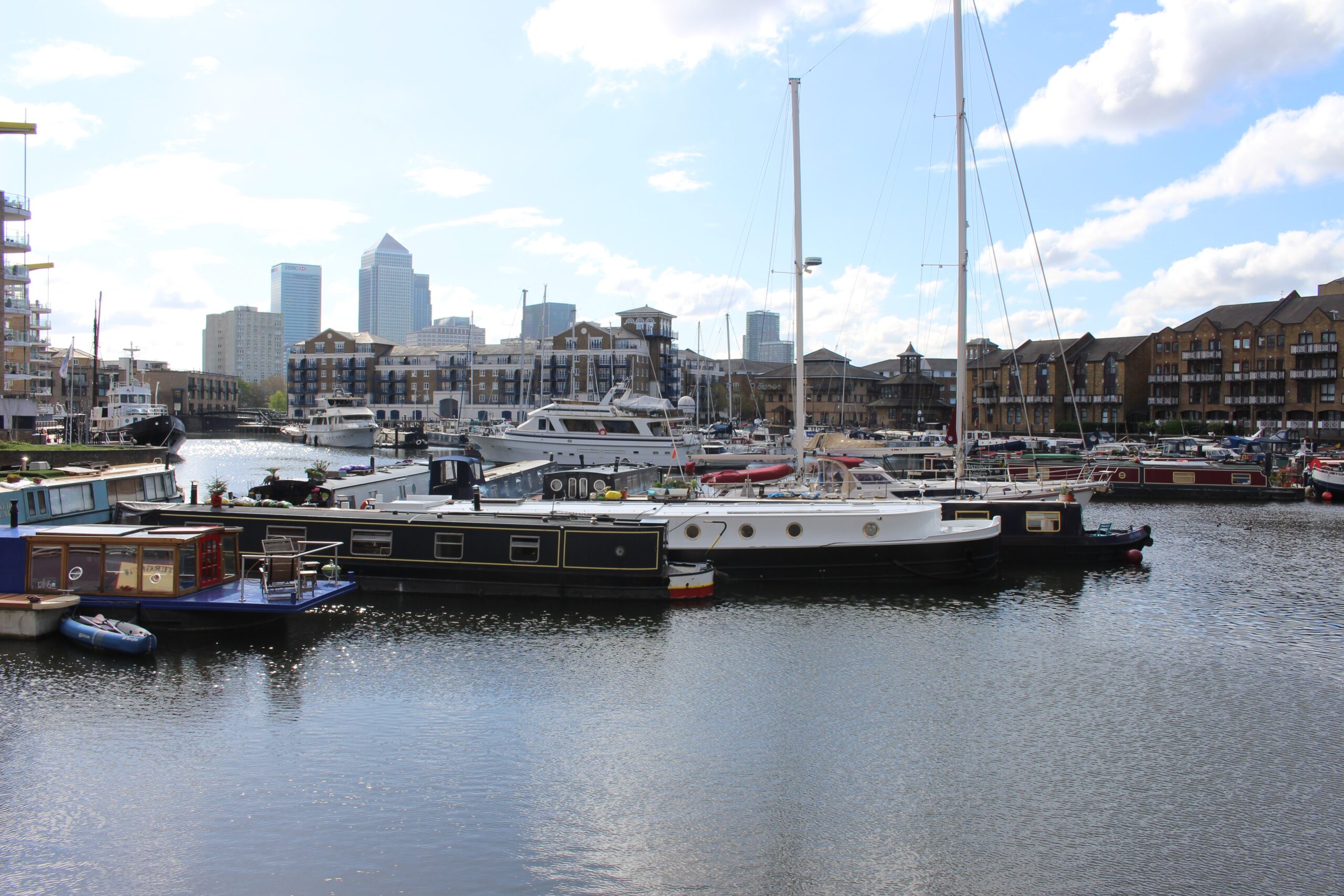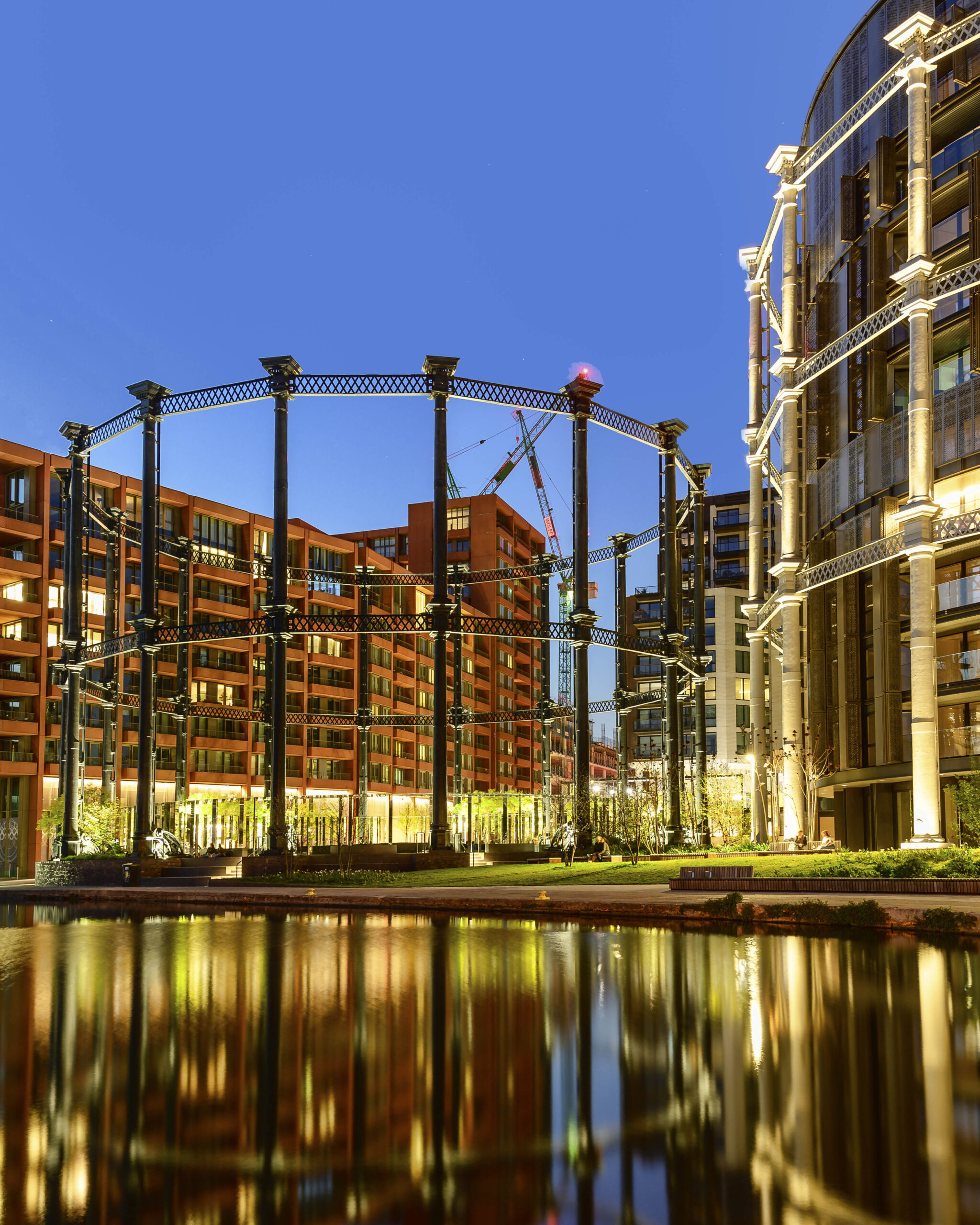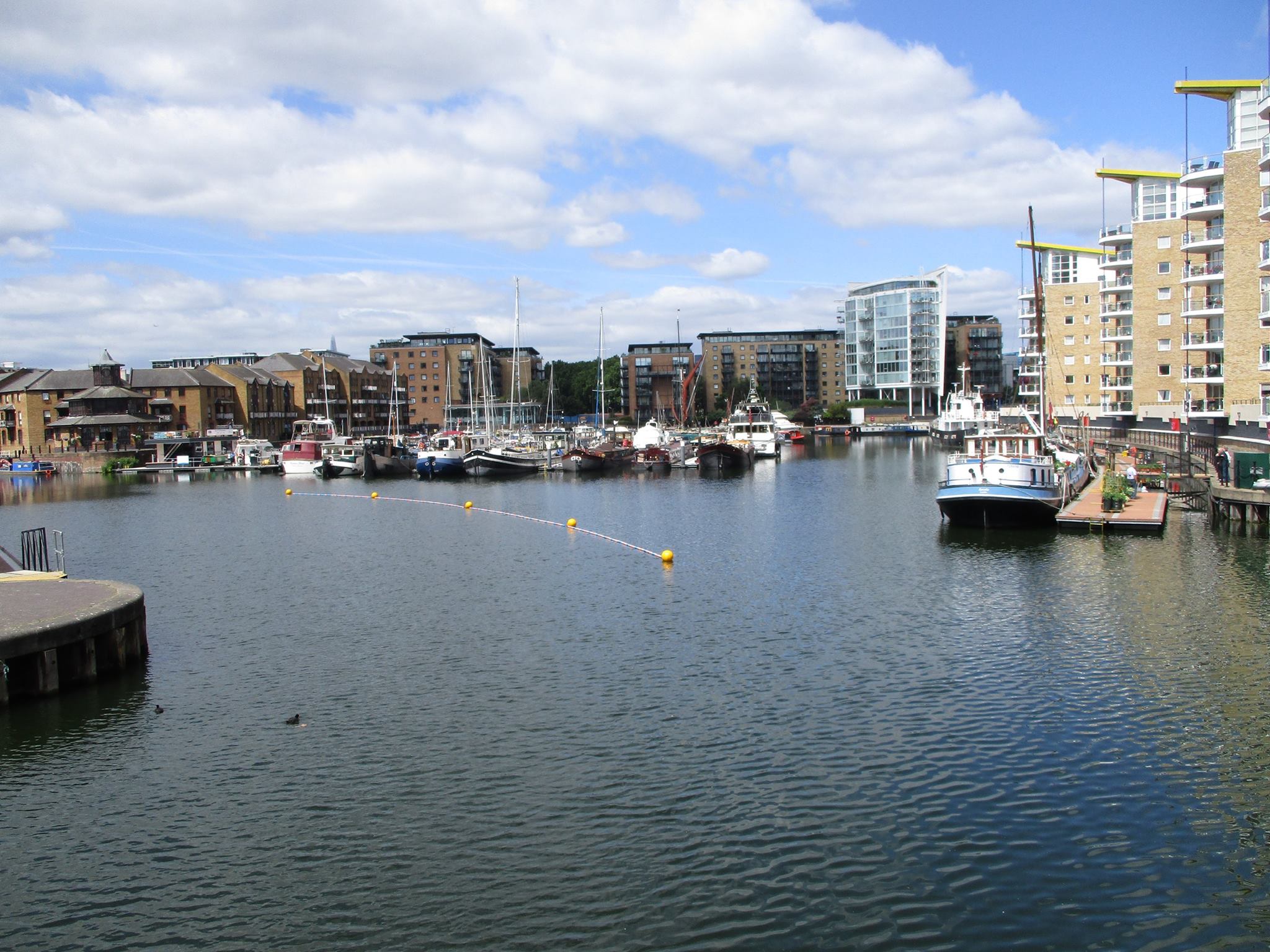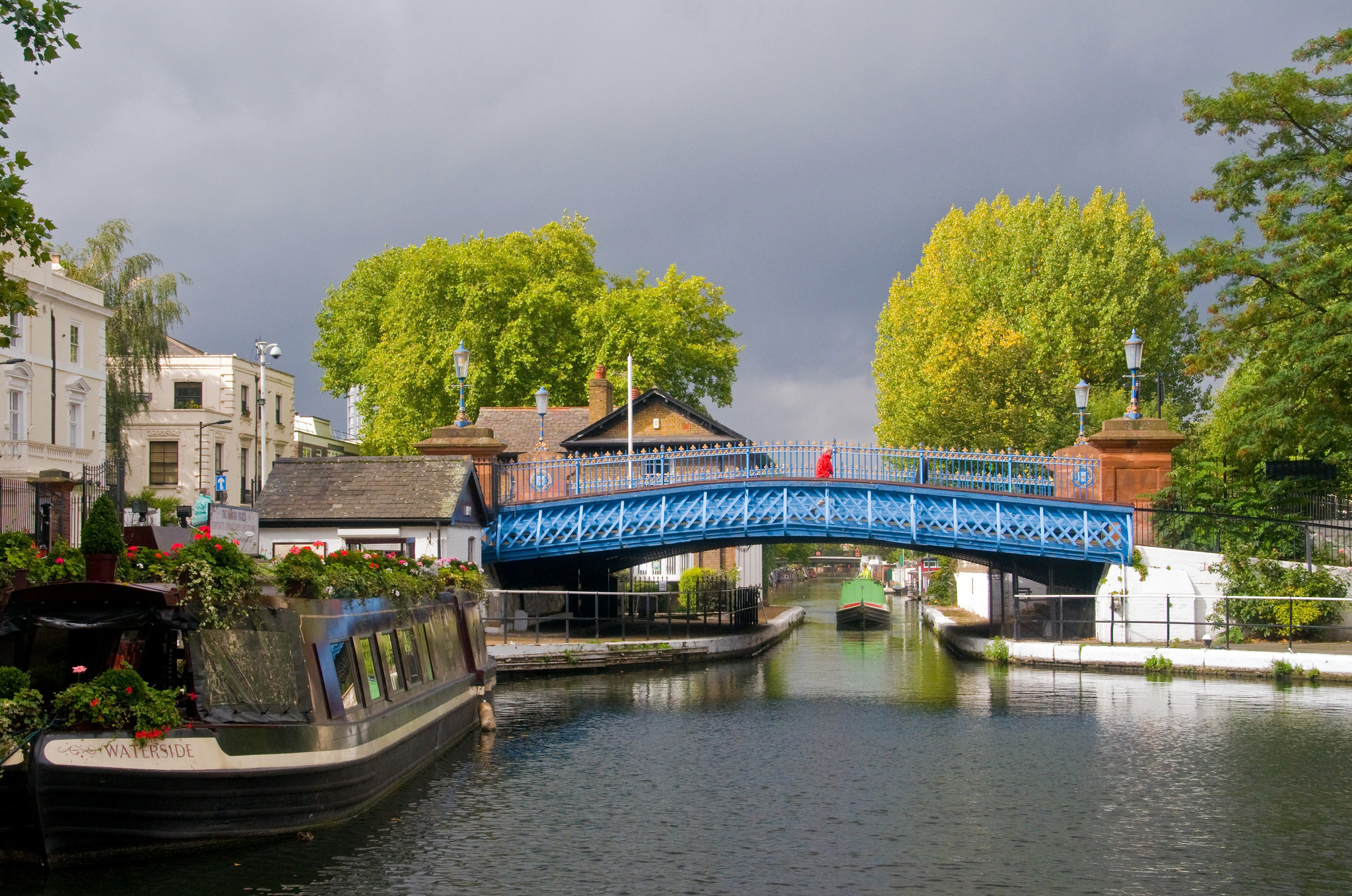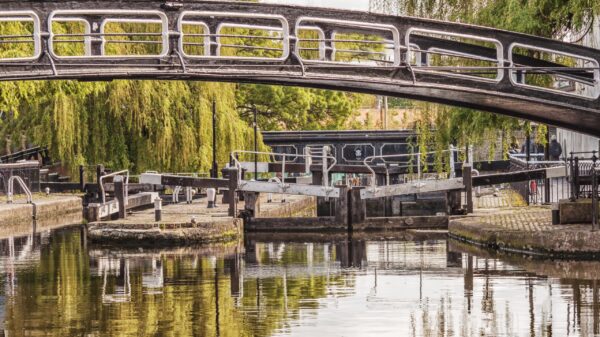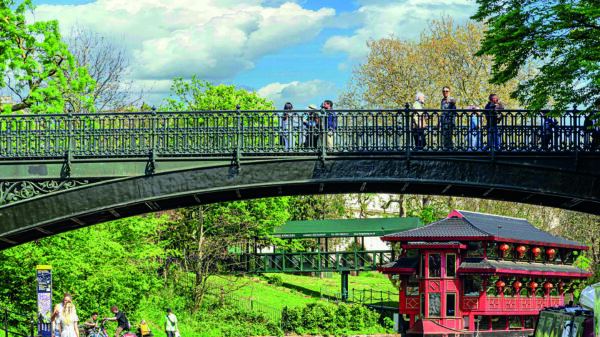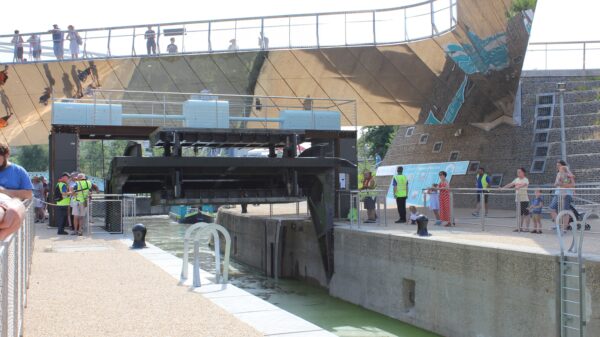1. Battlebridge Basin
The walk starts at Battlebridge Basin, which takes its moniker from the original name of the area, and a legend of a battle between Boudicca and the Romans.
The basin was completed in 1825 for landowner William Horsfall. Two warehouses remain: one was Porter’s bottling works (once the London bottling plant for Guinness, now a design studio), the other houses London Canal Museum. London Canal Museum is halfway along the basin. Formerly Carlo Gatti’s warehouse, it still has ice wells and dates from 1856.

